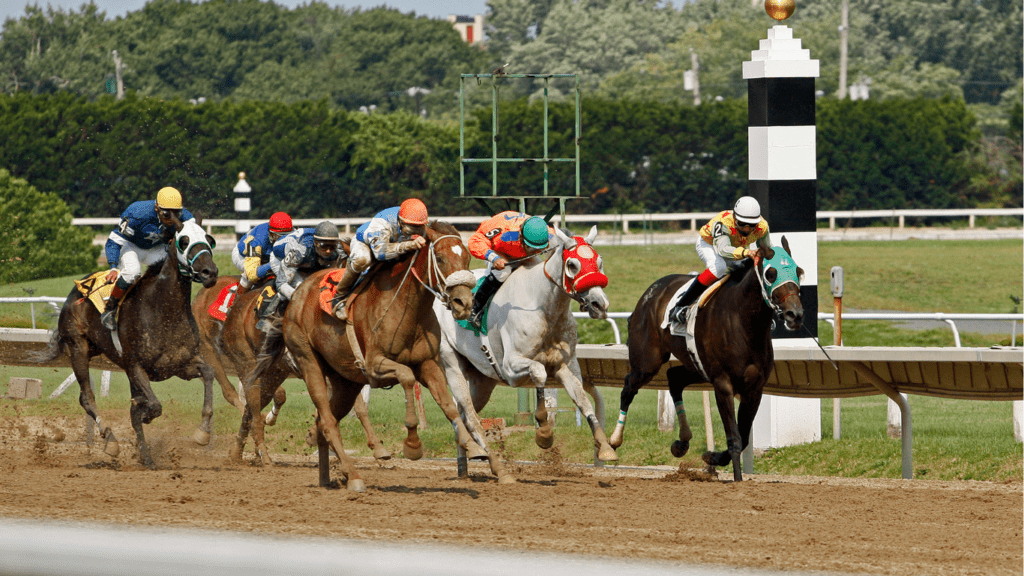Understanding Horse Racing Bets
When exploring horse racing bets, I focus on several wager types to tailor my strategy. These bets range from straightforward to complex, offering various risks and rewards. Each bet type requires its own analysis of the speed, stamina, and form factors.
- Win Bets:
I choose a horse I think’ll finish first. This basic bet considers the horse’s consistent speed during races and stamina over different track lengths. - Place Bets:
I select a horse expected to finish first or second. This bet mitigates risks by analyzing a horse’s overall form – assessing recent performance trends. - Show Bets:
I wager on a horse to finish in the top three. This conservative bet indicates my strategy relies on steady performance rather than explosive speed. - Exotic Bets:
I explore bets like Exacta, Trifecta, and Superfecta, predicting specific order finishes. These increase potential payouts if the odds align with my predictions but demand detailed analysis of each horse’s speed, stamina, and form.
By understanding these betting types, I enhance my approach to selecting the optimal bet type based on track conditions and competitors’ characteristics.
The Importance of Speed in Horse Racing
Speed stands as a critical factor in assessing a horse’s potential in races, impacting the outcome significantly. Understanding speed dynamics can enhance betting strategies.
Key Indicators of Speed
Several factors indicate a horse’s speed potential. Track records reveal past performances and establish benchmarks. Timing data, such as split times within a race, highlights acceleration and consistency. Comparing these against historical data provides insights into a horse’s capability. Additionally, speed ratings, numerical values assigned based on past race times adjusted for track conditions, offer a quantitative measure to evaluate and compare horses effectively.
Analyzing Recent Performances
Evaluating recent races gives insight into a horse’s current speed level. Reviewing placings and finishing times helps identify improvements or declines in performance. Consistency across races suggests reliability in speed, while fluctuations can indicate issues like track conditions or competition level. Observing any changes in jockey partnerships or training routines also aids in understanding shifts in speed performance.
Stamina: Evaluating Long-term Performance

Stamina is vital for assessing how well a horse maintains its speed over longer races. It directly affects a horse’s ability to perform consistently and handle the physical demands of different race lengths.
Signs of Strong Stamina
Identifying a horse with strong stamina boosts betting confidence. Key indicators include consistent performance in races over one mile, maintaining fast speeds in the final furlongs. Horses that have won or placed in endurance races often exhibit this trait. Look for horses with a pedigree that emphasizes endurance qualities as well. Analyzing training routines, such as regular long-distance workouts, can also suggest a focus on stamina.
How Track Conditions Affect Stamina
Track conditions can significantly impact a horse’s stamina during a race. A soft or heavy track can tire horses more quickly, favoring those with greater endurance, whereas a fast track may benefit horses with quick bursts of speed but require them to manage energy efficiently. When evaluating bets, consider recent performance data under similar conditions. Horses accustomed to specific track types may better conserve energy, resulting in a steady pace throughout the race.
Assessing the Form of a Horse
Form is a crucial factor when considering horse racing bets. By evaluating a horse’s condition and performance trends, I can make more informed predictions.
Recent Training and Health Records
Training and health records offer valuable insight into a horse’s current state. Regular updates on training intensity and frequency highlight readiness for upcoming races. If a horse has had recent injuries or health issues, understanding its recovery can predict potential performance impacts. Veterinary reports, available in racing programs, provide verified information on any medical treatments or interventions, helping assess the horse’s ability to compete at its best.
Historical Performance Patterns
Historical performance patterns reveal consistency and suitability to track types or distances. By examining past race results, I observe trends like horses excelling on specific courses or surfaces. Comparing different distances helps determine a horse’s preferred race length. Jockey changes also impact performance patterns, offering clues regarding the horse’s adaptability to different riding styles. Evaluating such patterns establishes a clear view of the horse’s capabilities and potential outcomes in future races.
Balancing Speed, Stamina, and Form in Bets
When placing horse racing bets, effectively balancing speed, stamina, and form enhances your chances of winning. Each factor plays a pivotal role in evaluating a horse’s potential, particularly in various betting scenarios.
Strategic Betting Approaches
Understanding the interplay of speed, stamina, and form, different betting methods capitalize on strengths. For win bets, I target horses with top speed figures and strong recent finishes. In place or show bets, I lean on horses displaying consistent stamina and form, offering a safer return. Exotic bets like:
- Exactas
- Trifectas
- Superfectas
challenge me to predict finishing orders, demanding a comprehensive analysis of all three factors. I evaluate past race performances, assessing how track conditions have historically influenced the horse’s stamina and speed.
Common Pitfalls to Avoid
Ignoring any of the three key factors risks undermining betting outcomes. I’ve seen bettors focus solely on speed, choosing fastest horses without considering track conditions or distance, which leads to underestimation of stamina. Neglecting form can also be detrimental, as a horse might struggle due to recent health setbacks despite previous strong performances. Overestimating a horse’s capability in unfamiliar track conditions or betting types further undermines strategic decision-making. Being mindful of these pitfalls enhances my judgment and betting success.



